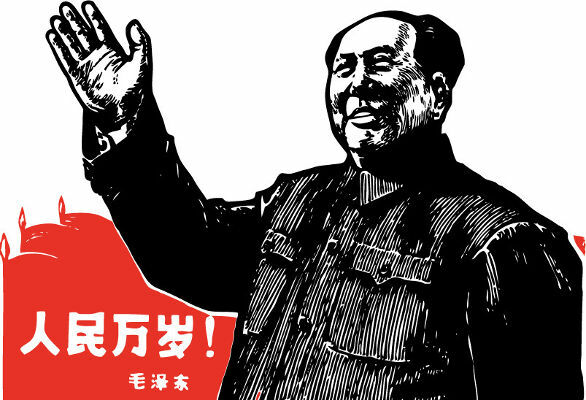1. Population
With an officially estimated population of 1.3 billion and a growth rate of around 0.6%, China is very concerned about its population growth and has tried to implement a strict policy to limit populations. births. The Single Child Law was adopted in 1979 and, in 2002, the Family Planning Law was created, which started to allow one child per family, with a subsidy for a second child, in certain circumstances, especially in rural areas, with a more flexible orientation towards ethnic minorities with small populations. Its execution varies and depends largely on "social compensation rates" to avoid extra births. Thus, the Chinese state began to curb the use of natural resources such as water and soil, in addition to reducing energy consumption.
Official government policy opposes abortion or forced sterilization, but in some locations there are cases of forced abortion. The government's goal is to stabilize the population in the first half of the 21st century, current projections are that the population will peak at around 1.6 billion in 2050. Currently, the country has a life expectancy of 73.47 years (71.61 years for men and 75.52 years for women). The Chinese government points out that 90% of the population is literate and that the infant mortality rate is 22 deaths for every thousand children born. Its HDI is considered average (0.687 –101st in the world ranking), but it has increased considerably (0.233 points in 25 years).
2. Ethnic Groups and Languages
The largest ethnic group is the Han Chinese, who constitute about 91.5% of the total population. In all segments of Chinese society, public institutions, commerce and business, it is the Han who exercise dominance. Judiciously, they were spread across the country by the Chinese dictatorship, controlling decisions and the economy in general. The rest are: zhuang (16 million), Manchu (10 million), hui (9 million), miao (8 million), Uighur (7 million), yi (7 million), Mongolian (5 million), Tibetan (5 million), buyi (3 million), Korean (2 million) and other minorities ethnic groups.
There are seven main Chinese dialects and many subdialects. Mandarin (or Chinese) is the predominant dialect, being spoken by over 70% of the population. It is taught in all schools and is the government's means of enforcing a cultural norm. About two-thirds of the Han ethnic group are native Mandarin speakers, while the rest, concentrated in southwestern and southeastern China, speak one of the other six main Chinese dialects. Non-Chinese languages widely spoken by ethnic minorities include Mongolian, Tibetan and Uighur, and still some Turkish languages (in the northwest, Xinjiang region) and Korean (in the northeast, region of Manchuria).
Do not stop now... There's more after the advertising ;)
3. Religion
Most Chinese are atheists. Traditional Taoism, Confucianism and Buddhism are the most practiced religions in China. Confucianism is also called a philosophical system and many Chinese who consider themselves atheists end up following some of its philosophical precepts. Buddhism has about 100 million adherents. Official figures indicate that there are still 20 million Muslims, 15 million Protestants and 5 million Catholics. Although the Chinese constitution reaffirms religious tolerance, the Chinese government imposes restrictions on religious practices outside of officially recognized organizations.
4. Urbanization
Even with the restrictions imposed by the Chinese government in order to prevent an unbridled rural exodus, in January 2012, data were announced that revealed that, for the first time in its history, China's urban population has surpassed the rural population: 51.27% of Chinese live in cities, something around 700 million people. Also according to Chinese authorities, there is an estimate that 300 million people will migrate from rural areas to urban areas in the next two decades.
The country's structural modernization is not reflected in the entire Chinese territory, which still needs to redistribute the income gained in three decades of strong economic growth. On the one hand, the UN recognizes that the number of people considered very poor in China - taking as a reference those who survive on an income equivalent to less than US$ 1 a day – it decreased a lot, with the removal of 475 million people between 1990 and 2005, Chinese urbanization is considered exclusionary and uneven.
*Image credits: TonyV3112 and Shutterstock.com
Julio César Lázaro da Silva
Brazil School Collaborator
Graduated in Geography from Universidade Estadual Paulista - UNESP
Master in Human Geography from Universidade Estadual Paulista - UNESP
By limiting most mainland Chinese couples to one child, the National Population Commission and Family Planning states that nearly 400 million births were prevented from 1979 in against.
"Prevented births in China are also significant for the preservation of natural and environmental resources environment around the world," says Professor Yuan Xin, from the Institute of Population and Development, part of the Nankai University. "But this merit could be squandered if the Chinese population were to consume relentlessly, as Westerners do, given the size of the country's population."
Official data show that Chinese per capita consumption is 20% lower than that of the United States. If they were equal, China's total energy use would be four times that of the US.
According to Yuan, the Chinese government has recognized the potential for excessive consumption and has adopted policies that encourage a "green" economy and lifestyle. It promoted the closure of polluting and energy-intensive industries, discouraged the purchase of cars through several measures, promoted the separation of recyclable waste and the conservation of water and energy, and prohibited the distribution of bags plastic.
The text reveals the results of the government's practices to control the growth and way of life of the Chinese population. However, as a possible future problem or side effect of this policy, we can cite:
a) The widening of economic disparities between different Chinese regions.
b) Problems related to social security and retirement, due to the inversion of the population's age pyramid.
c) Decrease in Chinese nationalism due to the increase in the influence of globalization, which could lead to the fragmentation of China's territory.


